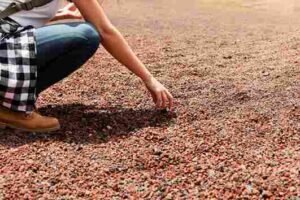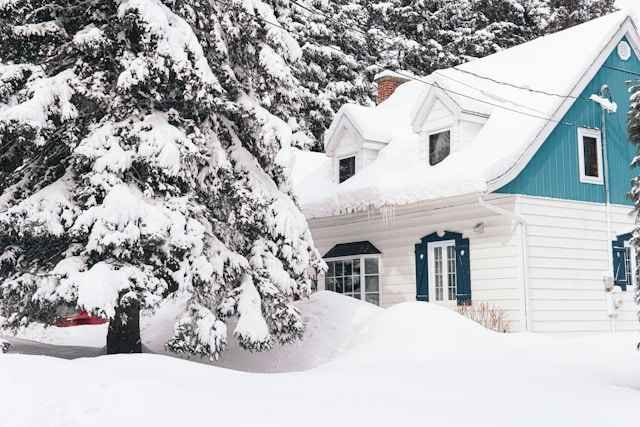Owning a pool, hot tub, or fountain in a desert climate is a different experience than maintaining the same features in milder regions. The intense heat, low humidity, and occasional dust storms create challenges that aren’t covered in standard maintenance guides written for Hot Climates. Understanding how extreme temperatures affect water features helps keep them running well without constant problems or sky-high bills.
Evaporation Changes Everything
The most obvious issue in hot, dry climates is how fast water disappears. A pool can lose a quarter-inch or more of water per day just from evaporation during summer. Hot tubs lose water even faster because the heated water evaporates more quickly. Over a week, that adds up to thousands of gallons and noticeably higher water bills.
But evaporation does more than just lower water levels. As water evaporates, it leaves behind all the minerals and chemicals that were dissolved in it. This concentrates everything that’s left – calcium, salts, chlorine, and other dissolved solids. The water chemistry gets thrown off, requiring more frequent testing and adjustment than in cooler climates.
Keeping water levels topped off becomes a weekly task rather than something to check occasionally. Some people install automatic fill systems that maintain proper levels without constant attention, which can be worth it for larger pools or when traveling.
Heat Stresses Equipment Constantly
Pool pumps, heaters, and filters that might last 10-15 years in moderate climates often need replacement after 7-10 years in extreme heat. The constant high temperatures make motors work harder, degrade seals and gaskets faster, and generally accelerate wear on all the moving parts.
Hot tub equipment faces even more stress because it’s dealing with both ambient heat and the heat it’s generating to warm the water. Running a hot tub in 110-degree weather means the heating system is fighting against external temperatures, and all those electronics and components are baking in the desert sun.
Shade makes a surprising difference here. Equipment that’s protected from direct sun lasts longer than equipment sitting in full exposure all day. Even a simple shade structure over the equipment area can extend the life of pumps and heaters by years.
When something does break down, getting hot tub repair in Tucson or pool service from technicians who understand desert-specific problems helps avoid the trial-and-error approach that wastes time and money.
Chemical Balance Gets Tricky
The intense UV radiation in desert climates breaks down chlorine faster than in cloudier regions. This means pools and hot tubs go through sanitizer more quickly, and the water can become unsafe between treatments if the schedule isn’t adjusted for the conditions.
Stabilizer (cyanuric acid) becomes more important in hot climates because it protects chlorine from UV degradation. But too much stabilizer creates its own problems by making the chlorine less effective. Finding the right balance requires more attention to chemistry than just dumping in chemicals on a set schedule.
The concentrated minerals from evaporation also affect the chemical balance. Calcium hardness levels climb, pH shifts happen more frequently, and alkalinity needs constant monitoring. Water testing needs to happen at least twice a week during summer, not just once a week like in milder climates.
Dust and Debris Are Constant Battles
Desert winds carry fine dust that settles on everything, including pool and hot tub surfaces. This dust doesn’t just make water look dirty – it clogs filters faster, creates work for circulation systems, and provides food for algae if it’s not removed promptly.
During dust storm season, a pool can go from clean to covered in a layer of grit in just hours. The cleanup isn’t difficult, but it’s frequent. Covering pools and hot tubs when they’re not in use helps, but covers themselves need to be cleaned regularly or they just deposit the dust back into the water when removed.
Skimmer baskets and filters need checking and cleaning more often than manufacturers typically recommend. What might be a monthly task in other climates becomes weekly in the desert. Ignoring this just makes pumps work harder and shortens their lifespan.
Surface Damage Happens Faster
The combination of intense sun, heat, and low humidity is hard on pool and hot tub surfaces. Plaster deteriorates faster, vinyl liners become brittle sooner, and acrylic hot tub shells fade and crack earlier than they would in gentler conditions.
Keeping water levels appropriate helps protect surfaces. When water levels drop and expose parts of the pool or hot tub shell to constant sun and heat cycling, those areas degrade faster. The waterline area where evaporation happens takes the most beating and often shows damage first.
Regular cleaning and proper chemical balance also protect surfaces. Calcium scaling from hard water and evaporation can permanently damage finishes if it’s allowed to build up. Addressing it early with proper chemicals or professional cleaning prevents the need for expensive resurfacing down the line.
Energy Costs Climb in Summer
Running pool equipment during the hottest part of the day wastes energy because everything works harder in extreme heat. Shifting pump run times to early morning and evening when temperatures drop saves electricity without sacrificing water quality.
For hot tubs, the challenge is different – maintaining temperature in extreme heat actually costs less than heating it up from cold, but the equipment still runs constantly fighting evaporation and heat loss overnight. Using well-fitted covers when the hot tub isn’t in use makes the biggest difference in energy efficiency.
Some people shut down hot tubs entirely during the hottest months rather than trying to maintain them at 100+ degrees when outside temperatures are similar. The heating becomes pointless, and it’s just a very warm pool at that point. Draining it or running it cold saves energy and equipment wear.
Preventive Care Pays Off
The theme across all these challenges is that hot climates require more frequent attention to water features. What might be monthly maintenance elsewhere becomes weekly. What might be an annual check becomes seasonal. The extra effort prevents the expensive emergency repairs that happen when small problems are ignored in harsh conditions.
Understanding that desert conditions are harder on pools and hot tubs helps set realistic expectations. These features are absolutely enjoyable in hot climates – millions of people have them and love them. But they do require adjusting maintenance routines and expectations to match the environment. The payoff is having a functioning backyard oasis that provides relief from the heat rather than becoming a constant source of problems and expenses.







